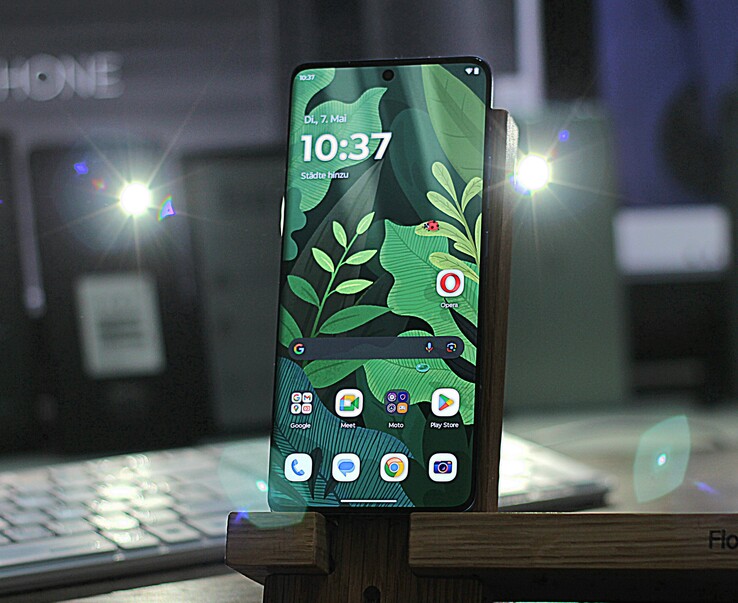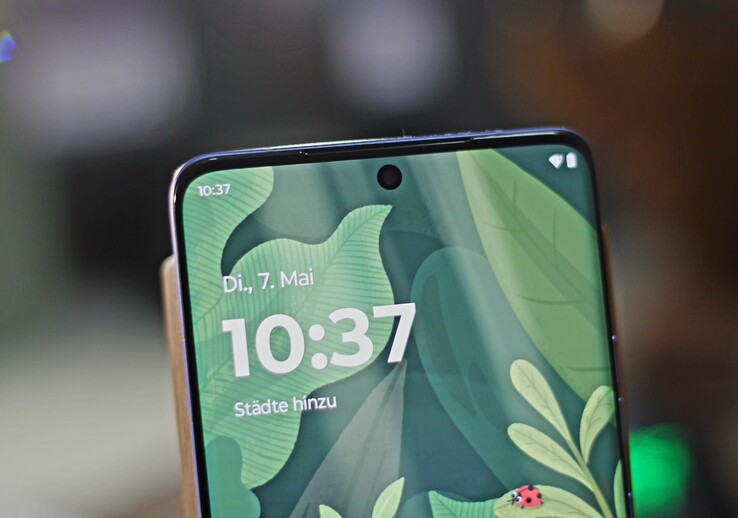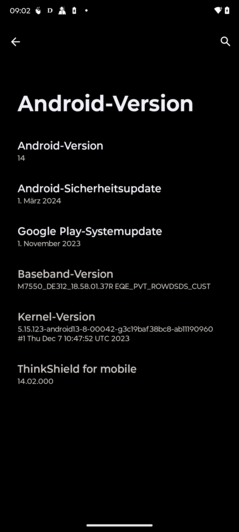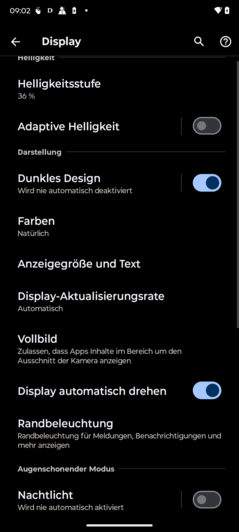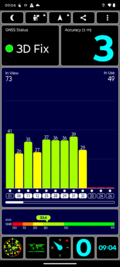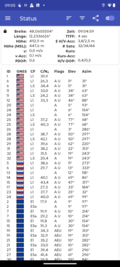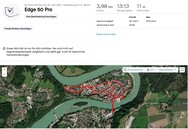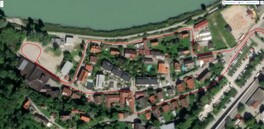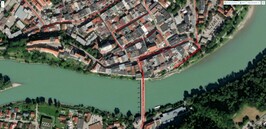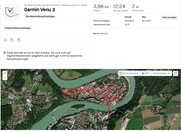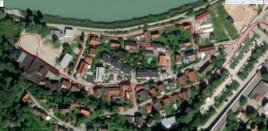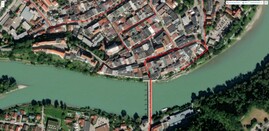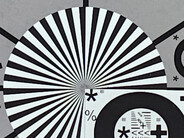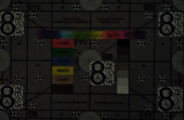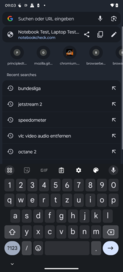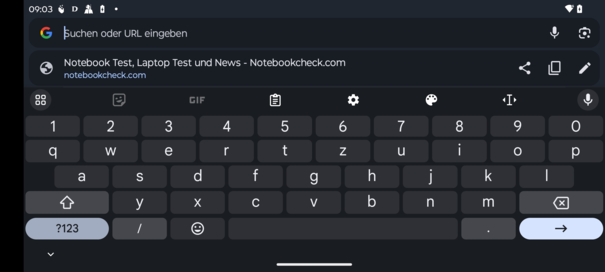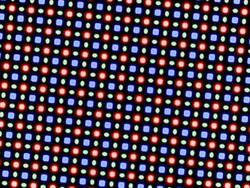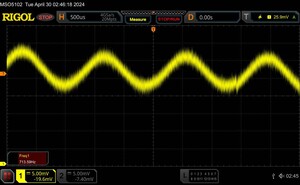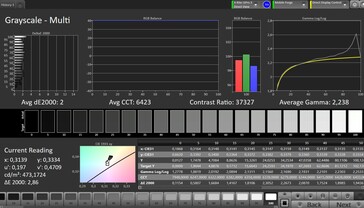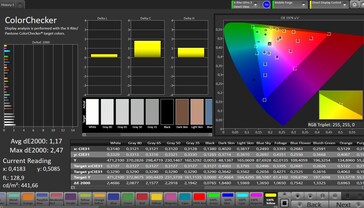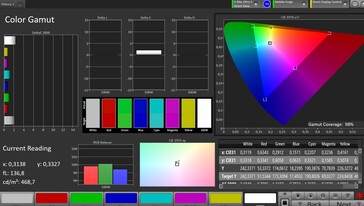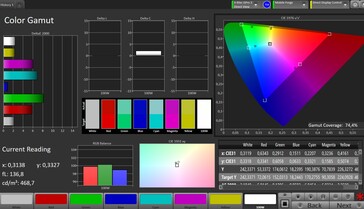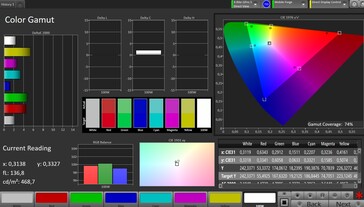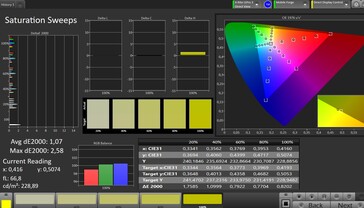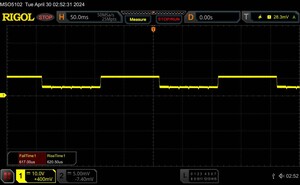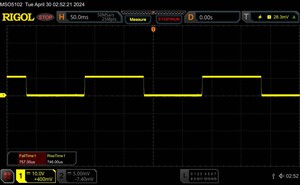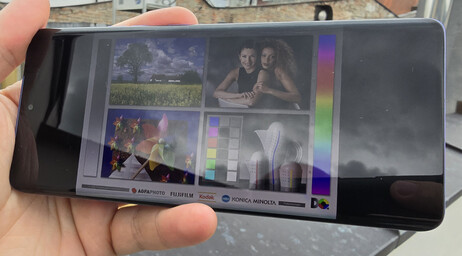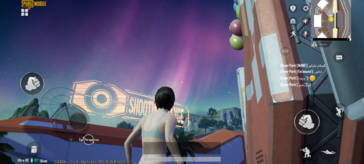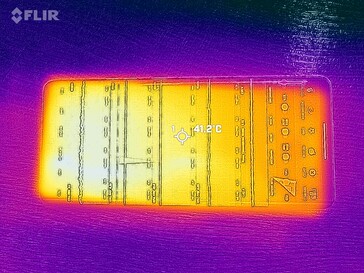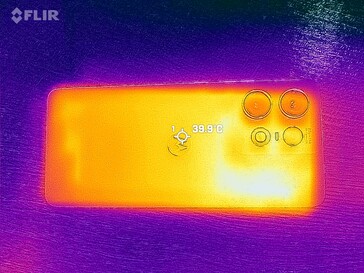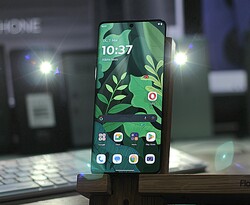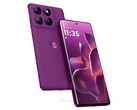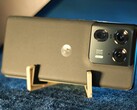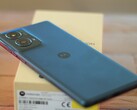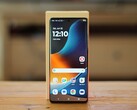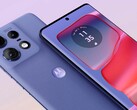Motorola Edge 50 Pro smartphone review – See the world in Pantone colors
Motorola has revamped its Edge series (again): After the Edge 20 Pro could initially be purchased for little money, the devices kept getting more and more expensive up until the Edge 40 Pro and eventually took over as Motorola's top-of-the-range smartphones. This year, the Edge 50 Ultra has been released, which means the Edge 50 Pro has to make some room and has moved down in terms of price, now costing exactly what the Edge 20 Pro did in the beginning: around US$750.
In turn, it no longer features a true flagship processor and its camera continues to have to make do without an optical periscope zoom. If you take a look at its spec sheet, then you'll see that a low weight, slim silhouette with a large screen and fast charging capabilities all speak for the device.
However, within this price class, Motorola has to compete with some strong competitors, such as the Samsung Galaxy S23 FE and the Xiaomi 14. It will be interesting to see whether the Edge 50 Pro can keep up with them during our test.
Possible competitors compared
Rating | Date | Model | Weight | Drive | Size | Resolution | Price |
|---|---|---|---|---|---|---|---|
| 87.6 % v7 (old) | 05 / 2024 | Motorola Edge 50 Pro SD 7 Gen 3, Adreno 720 | 186 g | 512 GB UFS 2.2 Flash | 6.70" | 2712x1220 | |
| 89.4 % v7 (old) | 05 / 2023 | Motorola Edge 40 Pro SD 8 Gen 2, Adreno 740 | 199 g | 256 GB UFS 4.0 Flash | 6.67" | 2400x1080 | |
| 85.5 % v7 (old) | 03 / 2024 | Samsung Galaxy S23 FE Exynos 2200, Xclipse 920 | 209 g | 128 GB UFS 3.1 Flash | 6.40" | 2340x1080 | |
| 89.8 % v7 (old) | 01 / 2024 | Xiaomi 14 SD 8 Gen 3, Adreno 750 | 193 g | 256 GB UFS 4.0 Flash | 6.36" | 2670x1200 | |
| 87.4 % v7 (old) | 07 / 2023 | Nothing Phone (2) SD 8+ Gen 1, Adreno 730 | 201.2 g | 256 GB UFS 3.1 Flash | 6.70" | 2412x1080 |
Case – Nicely integrated camera module
The Motorola Edge 50 Pro is a very slim smartphone with rounded edges and whose screen edges are pulled over the sides. It sits very nicely in your hand and it features a stable and high-quality build. We just noticed a few smaller issues: The edges of the metal frame above the screen and at the bottom of the back can be felt and therefore don't fit seamlessly. The phone also creaks quietly when you try to twist it.
The back of our violet test device is covered with a rubberized artificial leather material, which gives the phone a very good grip and makes it immune to fingerprints. A further color options is black which also uses faux leather. The most striking color variant is Moonlight Pearl which is made from Italian mother-of-pearl.
Regardless of which color you end up going for, the camera module is installed on the top left and is separated from the rest of the back with a slight curve. It fits in organically and doesn't look like a foreign object.
In terms of weight, the Motorola Edge 50 Pro offers less than all of the comparison devices and its predecessor, weighing in at only 186 grams. This is despite the fact it features the largest screen size within the comparison field. The phone is packaged inside a scented box that exudes Motorola's own custom scent. It is also absorbed into the synthetic leather back of the phone and you can smell it on your hands after touching it. Whether you like the scent is probably a matter of taste.
The case is IP68-certified against water and dust, so you can submerge it into freshwater for several minutes without the phone getting damaged.
Connectivity – Plenty of storage and DisplayPort
With 12 GB RAM and 512 GB mass storage, the Edge 50 Pro is very well-equipped and can compete with the latest high-end phones. However, its mass storage is only UFS 2.2 Flash. We will take a closer look at which speed losses you will have to deal with a bit later on.
The USB 3.0 port ensures slightly speedier data transfers and it also outputs an audio signal, as there is no 3.5-mm jack for headphones. Furthermore, you can connect an external screen to the phone, as its USB port supports DisplayPort 1.4. NFC for wireless payments or communicating with other devices in close vicinity is also on board.
The SIM slot is located along the bottom edge of the device, but you can only install one nano SIM card. Even so, you don't have to go without a dual-SIM function, as the Motorola phone supports eSIMs.
Software – AI features and Android 14
Motorola has installed Android 14 onto its smartphone and it hasn't changed much at all about Google's operating system. In addition, the manufacturer has installed its Moto app via which you can access all additional features such as gesture control and an always-on display. This is quite clever, as new functions can sometimes be added just by delivering a simple app update.
Quite a few third-party sponsored apps are preinstalled on the phone but they can be uninstalled relatively easily. In total, Motorola has kept the software quite slim but even so, it has installed several of its own apps for digital wellbeing, device support as well as Ready For, which you can use to connect the phone to monitors or PCs.
Motorola has promised security patches for the next 4 years and the phone will definitely see Android 15. Of course, its new AI features are also important—you can, for example, create a background image to match your outfit in a photo.
It features a Widevine L1 certification, so you can enjoy streaming content in HD from all major platforms.
Communication and GNSS – Speedy WLAN and fast 5G
The Edge 50 Pro supports WiFi 6E (IEEE 802.11ax), so on the one hand, it can connect to the lesser-used 6-GHz band, plus, it copes better with many wireless signals in one area. This wireless standard could theoretically enable transmission rates of up to 4,804 MBit/s. In practice, we measured a maximum of around 1,600 MBit/s on the Motorola phone, which is in line with what other devices deliver.
This means the Edge 50 Pro can also make use of a gigabit internet line. The full speed can usually only be used within internal networks, but this also requires the corresponding hardware with a router, network cables and end devices on the other side. In any case, the Edge 50 Pro is very fast when connected to WLAN.
Close to the router, the phone loads even large websites quickly and it has access to the full signal. 10 metres away from the access point and with 3 walls in between, it still shows 100 % and pages are still loaded very speedily.
Many frequencies are available within the 5G and 4G range of the smartphone, so the phone can also be used for connecting to the web in most countries around the world. Its reception during our test was impressive and in some cases, it even outperformed other high-end phones.
| Networking | |
| Motorola Edge 50 Pro | |
| iperf3 transmit AXE11000 6GHz | |
| iperf3 receive AXE11000 6GHz | |
| Motorola Edge 40 Pro | |
| iperf3 transmit AXE11000 6GHz | |
| iperf3 receive AXE11000 6GHz | |
| Samsung Galaxy S23 FE | |
| iperf3 receive AXE11000 | |
| iperf3 transmit AXE11000 | |
| iperf3 transmit AXE11000 6GHz | |
| iperf3 receive AXE11000 6GHz | |
| Xiaomi 14 | |
| iperf3 receive AXE11000 | |
| iperf3 transmit AXE11000 | |
| iperf3 transmit AXE11000 6GHz | |
| iperf3 receive AXE11000 6GHz | |
| Nothing Phone (2) | |
| iperf3 transmit AXE11000 6GHz | |
| iperf3 receive AXE11000 6GHz | |
| Average of class Smartphone | |
| iperf3 receive AXE11000 | |
| iperf3 transmit AXE11000 | |
| iperf3 transmit AXE11000 6GHz | |
| iperf3 receive AXE11000 6GHz | |
If you step outside, you are quickly located with an accuracy of 3 metres. This is the usual accuracy if a device is missing the additional SBAS system for satellite navigating and this is precisely the case on the Motorola Edge 50 Pro.
We want to know exactly how good the smartphone is at everyday navigating and determining positions, so in order to do so, we took it with us on a bike trip alongside the Garmin Venu 2 to compare—this is a smartwatch with very precise locating capabilities.
The Edge 50 Pro has no reason to shy away: The phone recorded our route extremely precisely and even narrow alleyways didn't give the phone any reason to panic. Aside from the odd small deviation, the Motorola can be recommended for everyday navigating, even if you have high demands.
Telephone features and call quality – Great call quality
The standard telephone and contact apps from Google are used on this phone.
Its call quality is very good: Whatever we said was transmitted well to the person on the other end of the line. And on our side, the person we were speaking to sounded as if they were standing right next to us. Conversations are transmitted very clearly via the installed loudspeaker and hands-free microphone, too. In addition, background noises are suppressed quite reliably.
Cameras – Lots of lenses but no periscope zoom
The Edge 50 Pro uses a 50-megapixel camera as its main camera, which allows a maximum aperture of f/1.4. This means you can achieve nice-looking blurred effects without needing any help from software, plus, it ensures a high light yield in gloomy surroundings. In addition, an optical image stabilizer prevents wobbly shots.
Photos taken on this camera show good colors and this is because Pantone has certified the phone's cameras: All color values are recorded and reproduced as determined by Pantone. Its level of detail is high and its HDR function reliably lightens darker areas without burning out bright areas of the image. However, in some areas of the photo of our surroundings, you can notice a slight over-brightening in sunlit areas.
In very low light and high contrasts, the picture is well-brightened, while at the same time, the candle flame remains clearly recognizable and is not overexposed. The image sharpness is very high.
There is also a 13-megapixel ultra-wide-angle lens on the back of the phone. It delivers good colors but fine details get lost. Furthermore, the phone can make use of a 10-megapixel tele-lens for extreme close-up shots, which also has an optical image stabilizer and increases the phone's range of focal lengths. The device also uses it for an optional hybrid zoom, i.e. to improve the quality of its digital zoom.
Videos can be recorded in a maximum of 4K, whereas the Edge 40 Pro was already able to record 8K videos. Autofocus and exposure adjustment work fast and are largely invisible. The resulting images are sharp and have a nice bokeh effect on objects that are close to the lens. You can switch between lenses while shooting, but this is sometimes very erratic and the autofocus is not always precise. Nevertheless, it significantly increases the phone's creative possibilities.
Image comparison
Choose a scene and navigate within the first image. One click changes the position on touchscreens. One click on the zoomed-in image opens the original in a new window. The first image shows the scaled photograph of the test device.
Main camera plantMain camera surroundingsMain camera low lightUltra-wide-angle cameraWe used our lab to check how the phone's camera behaves in controlled lighting conditions. In order to do so, we took a photo of our test chart in full studio lighting as well as in 1 lux of light.
The middle of the test chart still looks quite sharp but toward the edges, sharpness decreases a bit. Text in front of a red background looks a little blurry but in total, its depiction is good. At 1 lux, the image sharpness decreases drastically, details can hardly be recognized and the picture is only brightened a bit.
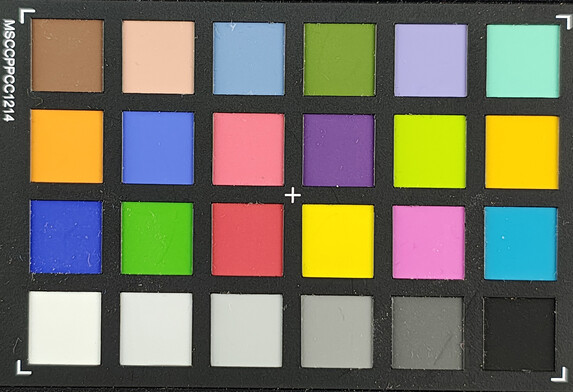
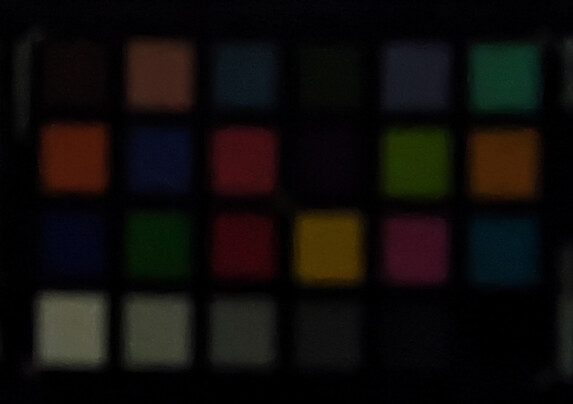
Accessories and warranty – Charger included
The Motorola Edge 50 Pro's box includes a charger, USB cable, silicone bumper and a SIM tool to open the SIM slot. You can't find any special accessories for this particular smartphone on Motorola's website.
The manufacturer has given this phone a 12-month standard warranty. You can expand its cover via MotoCare, for example with protection in the case of a broken display or to extend the phone's warranty. In specific cases, you may be able to take out a MotoCare plan for devices that weren't purchased directly via motorola.com.
Input devices & operation – Precise touchscreen
Google's standard keyboard GBoard is used on this phone. If you don't like it, then you can simply download and install alternative keyboard apps via the PlayStore. You should just be wary of untrustworthy providers.
The touchscreen is scanned for inputs up to 360 times per second and it reacts accordingly fast and reliably. Its palm recognition along the edge works quite precisely, so most accidental or unwanted inputs can be avoided. The hardware buttons are situated on the right side of the device—they are made from metal and you can feel for them quite well.
A fingerprint sensor is integrated into the display. It reacts quite reliably, even when the screen is off. However, there is a slight delay when unlocking the phone. Furthermore, the sensor is situated quite low down on the screen. This sometimes makes it quite hard to reach without having to adjust your grip.
You can also unlock the phone via facial recognition, but this is just a 2D method that uses the front-facing camera without any additional sensors. Even so, it works quite quickly and the screen's brightness is usually enough for faces to be recognized in darker surroundings, too.
Display – Lots of pixels in Pantone colors
The smartphone's P-OLED screen has a super-high resolution of 2,712 x 1,220 pixels which is more than its predecessor had to offer. In addition, it is quite large at 6.7 inches in diameter and it shines very brightly at up to 1,086 cd/m² (depicting a totally white screen). When depicting smaller areas, the screen can actually get even brighter—in the APL18 test, we measured 1,453 cd/m².
This means HDR content is displayed adequately and the panel's Pantone validation ensures accurate color depiction: The same as on the camera, Pantone has supposedly made sure that its colors are depicted exactly as they were defined.
We do, in fact, like its color depiction a lot and in comparison to the sRGB color space, it is very accurate, too. We noted barely any relevant deviations, meaning the display is perfect for professionally evaluating color tones.
The screen can display up to 144 Hz and at its best, it is slightly slower than the predecessor's screen which had a refresh rate of 165 Hz. However, you shouldn't notice this difference in everyday use.
| |||||||||||||||||||||||||
Brightness Distribution: 88 %
Center on Battery: 1064 cd/m²
Contrast: ∞:1 (Black: 0 cd/m²)
ΔE ColorChecker Calman: 1.17 | ∀{0.5-29.43 Ø4.82}
ΔE Greyscale Calman: 2 | ∀{0.09-98 Ø5.1}
98% sRGB (Calman 2D)
Gamma: 2.238
CCT: 6423 K
| Motorola Edge 50 Pro P-OLED, 2712x1220, 6.7" | Motorola Edge 40 Pro P-OLED, 2400x1080, 6.7" | Samsung Galaxy S23 FE Dynamic AMOLED x2, 2340x1080, 6.4" | Xiaomi 14 OLED, 2670x1200, 6.4" | Nothing Phone (2) OLED, 2412x1080, 6.7" | |
|---|---|---|---|---|---|
| Screen | -1% | -20% | 1% | 6% | |
| Brightness middle | 1064 | 1056 -1% | 897 -16% | 1043 -2% | 951 -11% |
| Brightness | 1038 | 1055 2% | 908 -13% | 1052 1% | 948 -9% |
| Brightness Distribution | 88 | 92 5% | 97 10% | 96 9% | 98 11% |
| Black Level * | |||||
| Colorchecker dE 2000 * | 1.17 | 1.28 -9% | 2.2 -88% | 1.1 6% | 1 15% |
| Colorchecker dE 2000 max. * | 2.47 | 2.85 -15% | 3.1 -26% | 2.8 -13% | 2.2 11% |
| Greyscale dE 2000 * | 2 | 1.7 15% | 1.7 15% | 1.9 5% | 1.6 20% |
| Gamma | 2.238 98% | 2.206 100% | 2.08 106% | 2.23 99% | 2.203 100% |
| CCT | 6423 101% | 6320 103% | 6617 98% | 6740 96% | 6516 100% |
* ... smaller is better
Screen Flickering / PWM (Pulse-Width Modulation)
| Screen flickering / PWM detected | 714 Hz | ||
The display backlight flickers at 714 Hz (worst case, e.g., utilizing PWM) . The frequency of 714 Hz is quite high, so most users sensitive to PWM should not notice any flickering. In comparison: 53 % of all tested devices do not use PWM to dim the display. If PWM was detected, an average of 8327 (minimum: 5 - maximum: 343500) Hz was measured. | |||
Measurement series with fixed zoom level and different brightness settings
At very low brightness levels, we measured flickering at a frequency of 714 cd/m². Motorola indicates that the screen uses DC dimming.
When looking at the screenshots of different brightness levels, you can only see slight fluctuations in brightness, meaning that the display should also be fine to use for sensitive people. Nevertheless, it wouldn't hurt to try it out before buying.
Display Response Times
| ↔ Response Time Black to White | ||
|---|---|---|
| 1.2 ms ... rise ↗ and fall ↘ combined | ↗ 0.6 ms rise | |
| ↘ 0.6 ms fall | ||
| The screen shows very fast response rates in our tests and should be very well suited for fast-paced gaming. In comparison, all tested devices range from 0.1 (minimum) to 240 (maximum) ms. » 4 % of all devices are better. This means that the measured response time is better than the average of all tested devices (20.5 ms). | ||
| ↔ Response Time 50% Grey to 80% Grey | ||
| 1.6 ms ... rise ↗ and fall ↘ combined | ↗ 0.8 ms rise | |
| ↘ 0.8 ms fall | ||
| The screen shows very fast response rates in our tests and should be very well suited for fast-paced gaming. In comparison, all tested devices range from 0.165 (minimum) to 636 (maximum) ms. » 6 % of all devices are better. This means that the measured response time is better than the average of all tested devices (32 ms). | ||
Outside, the phone remains legible even in daylight thanks to its bright screen. Direct sunlight results in reflections but even so, screen content remains visible. Of course, it is still more comfortable to use the device in the shade.
With the exception of some minimal changes in brightness, content remains visible on the phone's screen even when viewed from very flat angles.
Performance – More could've been possible
If you take a look at the SoC—the powerhouse of the Motorola Edge 50 Pro—then you may be a little disappointed at first: While its predecessors all featured a high-end Snapdragon-8-series SoC, the Edge 50 Pro has only been fitted with a Snapdragon 7 Gen 3 SoC.
Although it still delivers a lot of power, the Edge 50 Pro oftentimes couldn't keep up with its predecessor, the Edge 40 Pro, during our benchmarks and many of the comparison devices within this price class proved to be a lot faster, too. The processor trailed behind when it came to AI calculations in particular.
Now comes the question of whether you will actually notice this difference in performance in everyday use: This depends on how you intend to use the phone and what your expectations are. Navigating the phone smoothly in all situations is definitely possible. Multitasking also poses no issues for the SoC.
Only if you perform very complex calculations and work a lot with specialized AI apps will you notice that they tend to run more slowly.
| UL Procyon AI Inference for Android - Overall Score NNAPI | |
| Average of class Smartphone (2966 - 81594, n=142, last 2 years) | |
| Xiaomi 14 | |
| Motorola Edge 40 Pro | |
| Nothing Phone (2) | |
| Samsung Galaxy S23 FE | |
| Average Qualcomm Snapdragon 7 Gen 3 (8985 - 9791, n=2) | |
| Motorola Edge 50 Pro | |
Its GPU also delivers lots of power but no top performances. However, even demanding graphics run smoothly in the screen's native resolution—only 4K or 1440p make the phone start lagging.
GFXBench (DX / GLBenchmark) 2.7: T-Rex Onscreen | 1920x1080 T-Rex Offscreen
GFXBench 3.0: on screen Manhattan Onscreen OGL | 1920x1080 1080p Manhattan Offscreen
GFXBench 3.1: on screen Manhattan ES 3.1 Onscreen | 1920x1080 Manhattan ES 3.1 Offscreen
GFXBench: on screen Car Chase Onscreen | 1920x1080 Car Chase Offscreen | on screen Aztec Ruins High Tier Onscreen | 2560x1440 Aztec Ruins High Tier Offscreen | on screen Aztec Ruins Normal Tier Onscreen | 1920x1080 Aztec Ruins Normal Tier Offscreen | 3840x2160 4K Aztec Ruins High Tier Offscreen
| 3DMark / Wild Life Extreme Unlimited | |
| Xiaomi 14 | |
| Motorola Edge 40 Pro | |
| Nothing Phone (2) | |
| Samsung Galaxy S23 FE | |
| Motorola Edge 50 Pro | |
| 3DMark / Wild Life Extreme | |
| Xiaomi 14 | |
| Motorola Edge 40 Pro | |
| Nothing Phone (2) | |
| Samsung Galaxy S23 FE | |
| Motorola Edge 50 Pro | |
| 3DMark / Wild Life Unlimited Score | |
| Xiaomi 14 | |
| Samsung Galaxy S23 FE | |
| Motorola Edge 50 Pro | |
| 3DMark / Wild Life Score | |
| Samsung Galaxy S23 FE | |
| Motorola Edge 50 Pro | |
| Xiaomi 14 | |
| GFXBench (DX / GLBenchmark) 2.7 / T-Rex Onscreen | |
| Xiaomi 14 | |
| Motorola Edge 40 Pro | |
| Samsung Galaxy S23 FE | |
| Motorola Edge 50 Pro | |
| Nothing Phone (2) | |
| GFXBench (DX / GLBenchmark) 2.7 / T-Rex Offscreen | |
| Xiaomi 14 | |
| Motorola Edge 40 Pro | |
| Nothing Phone (2) | |
| Samsung Galaxy S23 FE | |
| Motorola Edge 50 Pro | |
| GFXBench 3.0 / Manhattan Onscreen OGL | |
| Xiaomi 14 | |
| Motorola Edge 40 Pro | |
| Samsung Galaxy S23 FE | |
| Motorola Edge 50 Pro | |
| Nothing Phone (2) | |
| GFXBench 3.0 / 1080p Manhattan Offscreen | |
| Xiaomi 14 | |
| Motorola Edge 40 Pro | |
| Nothing Phone (2) | |
| Samsung Galaxy S23 FE | |
| Motorola Edge 50 Pro | |
| GFXBench 3.1 / Manhattan ES 3.1 Onscreen | |
| Xiaomi 14 | |
| Motorola Edge 40 Pro | |
| Samsung Galaxy S23 FE | |
| Nothing Phone (2) | |
| Motorola Edge 50 Pro | |
| GFXBench 3.1 / Manhattan ES 3.1 Offscreen | |
| Xiaomi 14 | |
| Motorola Edge 40 Pro | |
| Nothing Phone (2) | |
| Samsung Galaxy S23 FE | |
| Motorola Edge 50 Pro | |
| GFXBench / Car Chase Onscreen | |
| Xiaomi 14 | |
| Motorola Edge 40 Pro | |
| Nothing Phone (2) | |
| Samsung Galaxy S23 FE | |
| Motorola Edge 50 Pro | |
| GFXBench / Car Chase Offscreen | |
| Xiaomi 14 | |
| Motorola Edge 40 Pro | |
| Nothing Phone (2) | |
| Samsung Galaxy S23 FE | |
| GFXBench / Aztec Ruins High Tier Onscreen | |
| Xiaomi 14 | |
| Motorola Edge 40 Pro | |
| Nothing Phone (2) | |
| Samsung Galaxy S23 FE | |
| Motorola Edge 50 Pro | |
| GFXBench / Aztec Ruins High Tier Offscreen | |
| Xiaomi 14 | |
| Motorola Edge 40 Pro | |
| Nothing Phone (2) | |
| Samsung Galaxy S23 FE | |
| Motorola Edge 50 Pro | |
| GFXBench / Aztec Ruins Normal Tier Onscreen | |
| Xiaomi 14 | |
| Motorola Edge 40 Pro | |
| Samsung Galaxy S23 FE | |
| Nothing Phone (2) | |
| Motorola Edge 50 Pro | |
| GFXBench / Aztec Ruins Normal Tier Offscreen | |
| Xiaomi 14 | |
| Motorola Edge 40 Pro | |
| Nothing Phone (2) | |
| Samsung Galaxy S23 FE | |
| Motorola Edge 50 Pro | |
| GFXBench / 4K Aztec Ruins High Tier Offscreen | |
| Xiaomi 14 | |
| Motorola Edge 40 Pro | |
| Nothing Phone (2) | |
| Samsung Galaxy S23 FE | |
| Motorola Edge 50 Pro | |
The Motorola Edge 50 Pro is a very fast smartphone for surfing the web: Pages load super quickly and usually, images are already loaded while scrolling.
| Jetstream 2 - 2.0 Total Score | |
| Xiaomi 14 (Chrome 120.0.6099.210) | |
| Nothing Phone (2) (Chrome 114) | |
| Average of class Smartphone (13.8 - 387, n=154, last 2 years) | |
| Average Qualcomm Snapdragon 7 Gen 3 (115.1 - 144.9, n=3) | |
| Motorola Edge 50 Pro (Chrome 124) | |
| Motorola Edge 40 Pro (Chrome 112) | |
| Samsung Galaxy S23 FE (Chrome 121) | |
| Speedometer 2.0 - Result | |
| Xiaomi 14 (Chrome 120.0.6099.210) | |
| Average of class Smartphone (15.2 - 585, n=138, last 2 years) | |
| Nothing Phone (2) (Chrome 114) | |
| Motorola Edge 50 Pro (Chrome 124) | |
| Samsung Galaxy S23 FE (Chrome 121) | |
| Average Qualcomm Snapdragon 7 Gen 3 (121 - 147, n=2) | |
| Motorola Edge 40 Pro (Chome 112) | |
| WebXPRT 4 - Overall | |
| Xiaomi 14 (Chrome 120.0.6099.210) | |
| Nothing Phone (2) (Chrome 114) | |
| Average of class Smartphone (22 - 273, n=149, last 2 years) | |
| Samsung Galaxy S23 FE (Chrome 121) | |
| Average Qualcomm Snapdragon 7 Gen 3 (103 - 126, n=2) | |
| Motorola Edge 50 Pro (Chrome 124) | |
| Motorola Edge 40 Pro (Chrome 112) | |
| WebXPRT 3 - Overall | |
| Xiaomi 14 (Chrome 120.0.6099.210) | |
| Nothing Phone (2) (Chrome 114) | |
| Motorola Edge 50 Pro (Chrome 124) | |
| Average Qualcomm Snapdragon 7 Gen 3 (n=1) | |
| Average of class Smartphone (38 - 347, n=57, last 2 years) | |
| Motorola Edge 40 Pro (Chrome 112) | |
| Octane V2 - Total Score | |
| Xiaomi 14 (Chrome 120.0.6099.210) | |
| Nothing Phone (2) (Chrome 114) | |
| Samsung Galaxy S23 FE (Chrome 121) | |
| Average of class Smartphone (2228 - 100368, n=204, last 2 years) | |
| Motorola Edge 50 Pro (Chrome 124) | |
| Average Qualcomm Snapdragon 7 Gen 3 (35539 - 42068, n=3) | |
| Motorola Edge 40 Pro (Chrome 112) | |
| Mozilla Kraken 1.1 - Total | |
| Average of class Smartphone (277 - 28190, n=158, last 2 years) | |
| Motorola Edge 40 Pro (Chrome 112) | |
| Average Qualcomm Snapdragon 7 Gen 3 (1150 - 1157, n=2) | |
| Motorola Edge 50 Pro (Chrome 124) | |
| Samsung Galaxy S23 FE (Chrome 121) | |
| Nothing Phone (2) (Chrome 114) | |
| Xiaomi 14 (Chrome 120.0.6099.210) | |
* ... smaller is better
The phone's storage makes it clear that Motorola had a tight budget for its top-of-the-range device: It only uses relatively slow UFS 2.2 Flash, while its predecessor already made use of the latest UFS 4.0 which is almost three times as fast. As a result, data transfers and loading times often feel quite sluggish on the Motorola Edge 50 Pro when compared to other top-of-the-range phones.
| Motorola Edge 50 Pro | Motorola Edge 40 Pro | Samsung Galaxy S23 FE | Xiaomi 14 | Nothing Phone (2) | Average 512 GB UFS 2.2 Flash | Average of class Smartphone | |
|---|---|---|---|---|---|---|---|
| AndroBench 3-5 | 122% | 7% | 123% | 32% | -18% | 40% | |
| Sequential Read 256KB | 1023.6 | 3434.4 236% | 1657.44 62% | 3385.74 231% | 1949.5 90% | 1026 ? 0% | 2170 ? 112% |
| Sequential Write 256KB | 1025.9 | 2887.4 181% | 994.67 -3% | 2906.65 183% | 1517.6 48% | 932 ? -9% | 1770 ? 73% |
| Random Read 4KB | 337 | 451.3 34% | 322.32 -4% | 420.99 25% | 287.5 -15% | 235 ? -30% | 295 ? -12% |
| Random Write 4KB | 390.2 | 539 38% | 288.23 -26% | 594.78 52% | 403.8 3% | 264 ? -32% | 340 ? -13% |
Games – 60 Hz is often possible
If you hoped to be able to use the phone's full 144 Hz as fps for playing games, then you will be disappointed. This is by no means to do with the device's performance capabilities—instead, manufacturers usually don't allow game developers to use the maximum possible frame number out of fear that it will result in high temperatures and high battery consumption.
In most games, you can only reach a maximum of 60fps, for example when playing Genshin Impact which allows 120fps on other devices, or in PUBG Mobile where we have seen 90fps and more as the maximum.
However, the smartphone does manage 60fps quite reliably if you don't choose the highest settings. You can play games very smoothly at medium or low settings and none of the games dropped below 34fps. We measured the frame rates using the GameBench software suite.
In addition, the reactive touchscreen and well-functioning position sensor allow for reliable operation.
Emissions – The case gets noticeably warm
Temperature
We took the Edge 50 Pro into our test lab and let it run the Burnout benchmark under continuous maximum load. After an hour, we then took a look at the case's temperatures. At room temperature, we measured an absolute maximum of 105.98 °F (41.1 °C).
This may be noticeable but it isn't critical—however, in higher ambient temperatures, such as in warmer climates or in the summer, it could get a lot higher. The SoC seemed to be slightly fazed by this and we noted a few dropped frames during the Wild Life stress test when repeating the benchmark multiple times.
(±) The maximum temperature on the upper side is 41.1 °C / 106 F, compared to the average of 35.2 °C / 95 F, ranging from 21.9 to 247 °C for the class Smartphone.
(±) The bottom heats up to a maximum of 41.1 °C / 106 F, compared to the average of 34 °C / 93 F
(+) In idle usage, the average temperature for the upper side is 23.5 °C / 74 F, compared to the device average of 32.9 °C / 91 F.
3DMark Wild Life Stress Test
| 3DMark | |
| Wild Life Stress Test Stability | |
| Motorola Edge 50 Pro | |
| Samsung Galaxy S23 FE | |
| Motorola Edge 40 Pro | |
| Nothing Phone (2) | |
| Wild Life Extreme Stress Test | |
| Motorola Edge 50 Pro | |
| Nothing Phone (2) | |
| Motorola Edge 40 Pro | |
| Samsung Galaxy S23 FE | |
Speakers
The speaker on the bottom edge doesn't have to work on its own, as it is supported by the earpiece. This makes stereo sound possible. The speakers don't get terribly loud, but it's enough to fill a medium-sized room.
The sound has to make do without bass, but some low mids are still audible. As the sound is also quite linear in the mids and highs, the result is a generally good sound image. This means that highs are not overemphasized and the sound is quite warm.
This means you can enjoy listening to music and playing movie sound through the phone's speakers— it just won't be quite as powerful.
If you'd prefer to connect headphones or external speakers, you can do this via the phone's USB-C port and an adapter if necessary, or you can choose Bluetooth. Motorola provides a comprehensive selection of audio codecs to do so, from SBC and AAC to LHDC V5, aptX Adaptive and Opus—just to name a few. This should allow you to connect almost any Bluetooth audio device in the best possible quality.
Motorola Edge 50 Pro audio analysis
(±) | speaker loudness is average but good (79.1 dB)
Bass 100 - 315 Hz
(-) | nearly no bass - on average 23.3% lower than median
(±) | linearity of bass is average (7.1% delta to prev. frequency)
Mids 400 - 2000 Hz
(+) | balanced mids - only 4.7% away from median
(+) | mids are linear (6.6% delta to prev. frequency)
Highs 2 - 16 kHz
(+) | balanced highs - only 4.3% away from median
(+) | highs are linear (6.9% delta to prev. frequency)
Overall 100 - 16.000 Hz
(±) | linearity of overall sound is average (20.8% difference to median)
Compared to same class
» 36% of all tested devices in this class were better, 8% similar, 56% worse
» The best had a delta of 12%, average was 36%, worst was 134%
Compared to all devices tested
» 55% of all tested devices were better, 8% similar, 38% worse
» The best had a delta of 4%, average was 24%, worst was 134%
Nothing Phone (2) audio analysis
(±) | speaker loudness is average but good (81.9 dB)
Bass 100 - 315 Hz
(-) | nearly no bass - on average 28.5% lower than median
(±) | linearity of bass is average (10.1% delta to prev. frequency)
Mids 400 - 2000 Hz
(±) | higher mids - on average 6.3% higher than median
(+) | mids are linear (6.5% delta to prev. frequency)
Highs 2 - 16 kHz
(+) | balanced highs - only 4.2% away from median
(+) | highs are linear (5.3% delta to prev. frequency)
Overall 100 - 16.000 Hz
(±) | linearity of overall sound is average (23.5% difference to median)
Compared to same class
» 51% of all tested devices in this class were better, 8% similar, 40% worse
» The best had a delta of 12%, average was 36%, worst was 134%
Compared to all devices tested
» 69% of all tested devices were better, 6% similar, 25% worse
» The best had a delta of 4%, average was 24%, worst was 134%
Battery life – Fast charging plus wireless support
Power consumption
In idle mode, the Edge 50 Pro is a little more power-hungry than comparable devices but it is quite frugal under load.
Making charging processes as fast as possible was important to Motorola, which is why the Edge smartphone supports wired charging at up to 125 watts. A corresponding charger is included and it takes less than an hour to fully recharge the phone. The biggest advantage, however, is that when the device's battery is low and you are in a rush, you will have enough power for several hours of use within a few minutes of charging.
If you prefer to power your phone wirelessly, you can use up to 50 watts. In addition, other devices can be charged wirelessly from the Motorola Edge 50 at up to 10 watts, which is very useful for TWS headphones, for example.
| Off / Standby | |
| Idle | |
| Load |
|
Key:
min: | |
| Motorola Edge 50 Pro 4500 mAh | Motorola Edge 40 Pro 4600 mAh | Samsung Galaxy S23 FE 4500 mAh | Xiaomi 14 4610 mAh | Nothing Phone (2) 4700 mAh | Average Qualcomm Snapdragon 7 Gen 3 | Average of class Smartphone | |
|---|---|---|---|---|---|---|---|
| Power Consumption | -27% | -63% | -2% | -6% | 8% | -23% | |
| Idle Minimum * | 0.9 | 0.7 22% | 0.69 23% | 0.51 43% | 0.9 -0% | 0.68 ? 24% | 0.869 ? 3% |
| Idle Average * | 1.3 | 0.8 38% | 1.15 12% | 0.89 32% | 1.1 15% | 1.21 ? 7% | 1.425 ? -10% |
| Idle Maximum * | 1.6 | 1.3 19% | 1.26 21% | 0.92 42% | 1.4 12% | 1.48 ? 7% | 1.588 ? 1% |
| Load Average * | 4.8 | 10 -108% | 15.93 -232% | 9.08 -89% | 5 -4% | 4.8 ? -0% | 7.17 ? -49% |
| Load Maximum * | 6.7 | 13.7 -104% | 16.09 -140% | 9.11 -36% | 10.4 -55% | 6.7 ? -0% | 10.8 ? -61% |
* ... smaller is better
Power consumption: Geekbench (150 cd/m²)
Power consumption: GFXBench (150 cd/m²)
Runtimes
The battery has a capacity of 4,500 mAh and is therefore slightly weaker than the Edge 40 Pro and some other comparison devices. However, this doesn't really make itself noticeable in terms of runtimes, as Motorola has done a good job in this aspect: You can surf the web for up to 16:19 hours and should be able to survive a day of intensive use.
If you like to watch movies and store them on the phone's internal storage, for example as downloads from major streaming providers, then you can spend up to 18:40 hours in front of the screen before it goes out. That's not quite enough for all 8 Harry Potter films, but it's probably healthier to take short breaks to load and relax between Sorcerer's Stone, Goblet of Fire and Deathly Hallows anyway.
What stands out is its long runtimes under load, which promise over 5 hours of gaming fun even away from a power socket.
| Motorola Edge 50 Pro 4500 mAh | Motorola Edge 40 Pro 4600 mAh | Samsung Galaxy S23 FE 4500 mAh | Xiaomi 14 4610 mAh | Nothing Phone (2) 4700 mAh | |
|---|---|---|---|---|---|
| Battery Runtime | 1% | -28% | 27% | -4% | |
| Reader / Idle | 1895 | 2102 11% | 1575 -17% | 2926 54% | 1744 -8% |
| H.264 | 1120 | 1062 -5% | 1083 -3% | 1674 49% | 1245 11% |
| WiFi v1.3 | 979 | 984 1% | 815 -17% | 1092 12% | 909 -7% |
| Load | 302 | 297 -2% | 73 -76% | 277 -8% | 268 -11% |
Pros
Cons
Verdict – A downgrade that still manages to impress
The Motorola Edge 50 Pro is a great addition to the current phone market as at the end of the day, it offers great performance and connectivity options as well as high-end features for a moderate price.
In many areas, the phone is a great success: Its case with its—finally on a smartphone—nearly seamlessly integrated camera module and its optional pearlescent finish, its speedy WLAN, precise location services and its bright and high-resolution screen which boasts accurate color reproduction and a Pantone certification.
The phone's battery lasts for ages and, if needed, it can be recharged super quickly—even if we would recommend reducing its charging power via the device's settings in order to improve the battery's long-term health.
On the other hand, we have to criticize Motorola's naming system which is pretty confusing: Although it is great that there is an even more powerful Ultra model this year, it doesn't make sense to downgrade the Pro model as a result, as it has always been the top model in recent years. Surely the manufacturer would've been able to come up with a different name which better describes its positioning—also in comparison to its predecessor.
This is because the Edge 50 Pro is a lot cheaper than the Edge 40 Pro but performance-wise, it also faces some downgrades in the shape of a slower SoC and sluggish storage to save costs. One or two megapixels have been saved when it comes to its camera, too—at least the main camera offers a very wide aperture. Its photos look good in total but you will have to continue to make do without a periscope zoom.
The Motorola Edge 50 Pro offers good connectivity for its money and as a result, it can even compete with certain high-end phones.
Its predecessor, the Edge 40 Pro, can already be found for relatively cheap and it offers better performance but less storage. The Xiaomi 14 is an equally attractive high-end phone which also offers lots of power and a very bright screen.
Price and availability
At the time of writing, the Motorola Edge 50 Pro is not yet available to purchase in the United States. It will likely retail for around US$750. You can check out all of Motorola's phones via the manufacturer's Amazon store.
Motorola Edge 50 Pro
- 05/07/2024 v7 (old)
Florian Schmitt
Transparency
The selection of devices to be reviewed is made by our editorial team. The test sample was provided to the author as a loan by the manufacturer or retailer for the purpose of this review. The lender had no influence on this review, nor did the manufacturer receive a copy of this review before publication. There was no obligation to publish this review. We never accept compensation or payment in return for our reviews. As an independent media company, Notebookcheck is not subjected to the authority of manufacturers, retailers or publishers.
This is how Notebookcheck is testing
Every year, Notebookcheck independently reviews hundreds of laptops and smartphones using standardized procedures to ensure that all results are comparable. We have continuously developed our test methods for around 20 years and set industry standards in the process. In our test labs, high-quality measuring equipment is utilized by experienced technicians and editors. These tests involve a multi-stage validation process. Our complex rating system is based on hundreds of well-founded measurements and benchmarks, which maintains objectivity. Further information on our test methods can be found here.




